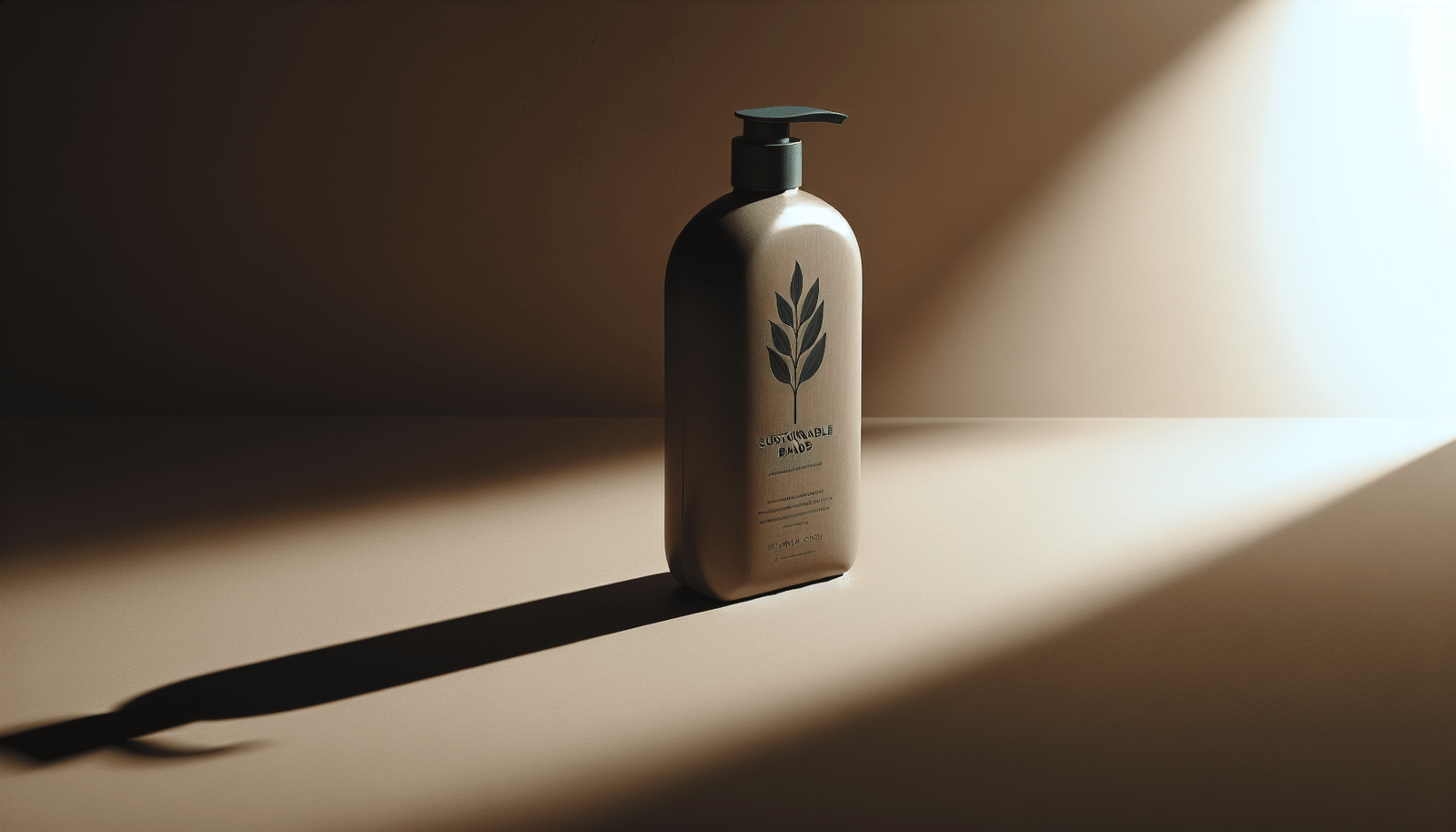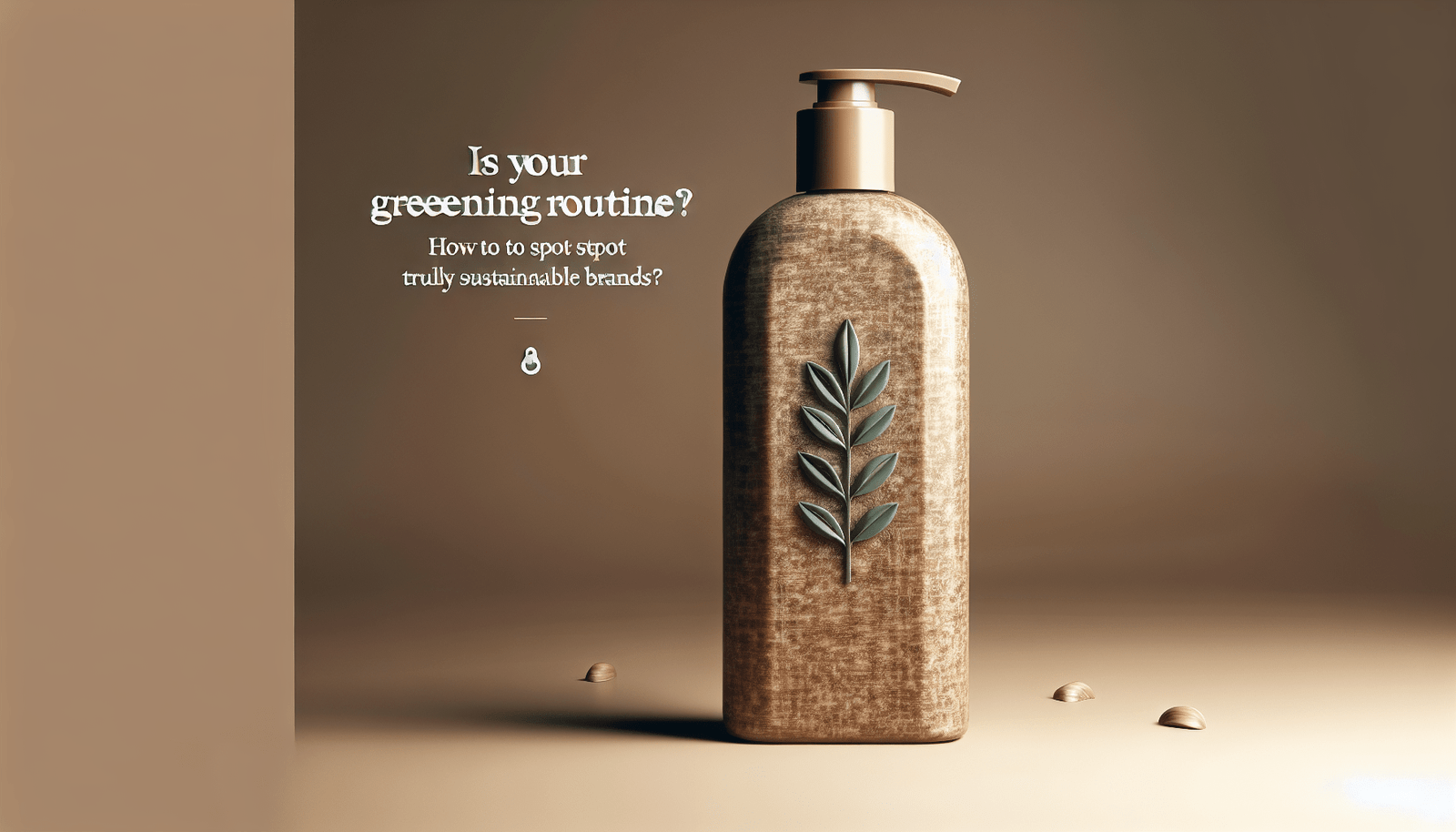Does your ‘eco-friendly’ shampoo actually help the planet—or is it just clever marketing?
It’s a question you might not have thought about while standing in the aisle of your local store, scanning labels adorned with words like “natural” or “sustainable.”
Understanding what these terms really mean can be confusing, especially in the world of personal care products.
Greenwashing is an unfortunate reality, and it’s a term you should definitely know about if you want to make authentic and ethical choices for your grooming routine.
It’s exciting to see how many consumers are increasingly prioritizing sustainability in their purchasing decisions.
Brands, eager to tap into this growing demand, sometimes resort to misleading marketing tactics that can obscure the truth of their eco-friendliness.
This raises critical questions about how to differentiate truly sustainable brands from those simply playing into the green trend without having substantial practices to back it up.
What Is Greenwashing in Grooming?
Defining Greenwashing
To understand if your grooming products are genuinely eco-friendly or just cleverly marketed, it’s important to start by defining greenwashing.
Essentially, greenwashing happens when a company claims that their products are environmentally friendly through misleading or exaggerated assertions, while not actually following through with sustainable practices.
Imagine you pick up a shampoo that boasts “100% natural!” but upon closer inspection, you find it contains synthetic fragrances and preservatives.
This is a classic example of greenwashing where the brand aims to lure you in with appealing language without adhering to environmentally sustainable practices.
Common Greenwashing Tactics
Here are some common tactics brands use to project an eco-friendly image:
- Vague Terms: Words like “natural,” “clean,” and “eco-friendly” might be plastered on labels, but these terms are often left undefined. Without clear definitions, they can create a false impression of sustainability.
- Hidden Trade-offs: A brand might label its packaging as “recyclable,” yet it might not actually have an effective recycling program in place. This can make consumers feel good about their purchase without any real impact.
- Misleading Imagery: Some brands use earthy colors or images of nature on their packaging to reinforce a message of sustainability, even if the product doesn’t align with these values.
Quick Test: Is Your Brand Greenwashing?
Here’s a simple checklist to help you determine whether your chosen brand might be engaged in greenwashing:
- Does it have third-party certifications?
- Are ingredients fully disclosed and sourced responsibly?
- Are there clear sustainability goals mentioned on their website or packaging?
If you find yourself answering “no” to these questions, it might be time to reconsider your choices.
Why Ethical and Sustainable Grooming Brands Matter
The Environmental Cost of Conventional Products
Let’s think about the impact of conventional grooming products you might be using.
Did you know that 120 billion units of packaging are produced every year by the global cosmetics industry?
A significant portion results in plastic pollution, impacting marine and terrestrial habitats alike.
Plus, the toxic chemicals from personal care products can find their way into waterways, affecting ecosystems and wildlife.
The Human Impact
It’s not just the environment that pays the price for conventional grooming products. Often, they are manufactured under unethical labor practices.
Many products may be tested on animals, raising critical ethical questions about your grooming choices.
Benefits of Switching
Making the shift to ethical and sustainable brands can have numerous benefits. Take a look at the comparison below:
| Aspect | Conventional Brand | Ethical Brand |
|---|---|---|
| Ingredients | Synthetic additives | Organic, non-toxic |
| Packaging | Single-use plastic | Refillable/compostable |
| Ethical Standards | Undefined practices | Clear ethical commitments |
Choosing ethical brands means embracing transparency and responsibility in your grooming routine.
How to Spot Truly Sustainable Brands

Ingredient Transparency
When evaluating grooming products, ask yourself: “Are all ingredients listed and sourced responsibly?”
Brands committed to true sustainability will be open about their ingredients. Look for certifications from reputable organizations that assure you of their ethical sourcing.
Red-flag ingredients to avoid:
- Parabens
- Sulfates
- Microplastics
Packaging That Doesn’t Lie
Examine the packaging carefully. Is it genuinely recyclable, or is it just a marketing gimmick?
Ideally, look for packaging made from sustainable materials like glass, aluminum, or even sugarcane resin, which have a lower environmental impact than conventional plastics.
Certifications That Matter
Not all certifications are created equal. Here’s a helpful table outlining some significant certifications you should look for:
| Certification | What It Guarantees |
|---|---|
| Leaping Bunny | No animal testing |
| Fair Trade | Ethical labor practices |
| USDA Organic | Certified organic ingredients |
| B Corp | High social and environmental performance |
These certifications can help you feel confident that the brands you support align with your values.
Brand Ethics Beyond the Product
A truly sustainable brand goes beyond just the product itself.
Look for companies that operate carbon neutrally, have robust charitable initiatives, and support community projects.
Brands that are engaged in social responsibility will typically reflect their commitment in various ways.
Deep Dive: 10 Ethical and Sustainable Grooming Brands
Now that you know what to look for, let’s explore some leading ethical and sustainable grooming brands that you can consider when updating your routine.
Ethique
Ethique offers a range of shampoo and conditioner bars that are both vegan and cruelty-free.
Their packaging is plastic-free and compostable, and they utilize ethically sourced ingredients.
Ethique aims to significantly reduce plastic waste, making it a solid choice for eco-conscious consumers.
Dr. Bronner’s
Dr. Bronner’s is well-known for its castile soap, which is versatile and made using fair trade and organic ingredients.
Their marketing emphasizes ethical practices, and they’re committed to sustainability, focusing on ingredient transparency and social justice.
Plaine Products
Designed with a completely refillable system in mind, Plaine Products offers personal care items such as shampoos and conditioners in aluminum bottles.
Their products are free of harmful chemicals and are made from biodegradable ingredients, allowing you to maintain a clean conscience while caring for your hair.
Meow Meow Tweet
Meow Meow Tweet focuses on vegan and zero-waste body care products. Their unique and playful branding highlights their commitment to reducing plastic waste.
They offer refillable options, making it easy for you to make sustainable choices.
Aveda
Aveda emphasizes botanical ingredients and eco-friendly practices, from sourcing to production.
They aim to support environmental issues actively through sustainable sourcing and encouraging recycling through their products.
Weleda
Weleda offers a wide variety of natural cosmetics with an emphasis on sustainability and biodynamic farming.
Their products are not tested on animals, aligning with ethical care practices.
Biossance
Biossance produces skincare that harnesses biotechnology to create effective products using sustainable methods.
Their focus is on fully transparent ingredient sourcing while pledging to be cruelty-free.
Fable & Mane
Fable & Mane incorporates Ayurvedic ingredients and sustainable practices into their grooming products.
With an emphasis on traditional wisdom and sustainability, they aim to deliver effective personal care that respects nature’s resources.
Seed Phytonutrients
Seed Phytonutrients sets itself apart with a commitment to eco-friendly packaging and organic ingredients.
They offer rejuvenating hair and body care products that are housed in recycled and biodegradable packaging.
UpCircle
UpCircle specializes in using leftover byproducts from other industries (think coffee grounds, fruit stones) to create their range of skin and body care.
They are all about creating high-quality products while reducing waste.
How to Transition to a Green Routine

Taking meaningful steps towards a greener grooming routine can seem daunting, but it doesn’t have to be! Here’s how you can navigate this transition smoothly.
Step 1: Audit Your Current Products
Start by evaluating which products in your grooming kit have the worst environmental impact.
This might include items in single-use plastic containers or those with harmful ingredients. A checklist to guide your audit could include:
- Which products are in plastic packaging?
- Which brands do not disclose their ingredients?
- Are there any items you’ve had for too long?
Step 2: Replace Strategically
Once you’ve done your audit, replace products strategically—begin with those you use most frequently, like your shampoo or toothpaste.
This way, you can make an immediate impact on your routine.
Step 3: Adopt Zero-Waste Habits
Adopting zero-waste habits is an excellent way to ensure you maintain an eco-friendly grooming routine:
- Consider DIY options like bar shampoos or homemade deodorants, which often have less environmental impact.
- Explore refillable subscription services that allow you to replenish items without creating additional waste.
10 FAQs About Ethical Grooming Brands
- What should I look for in an ethical grooming brand?
Look for transparency in ingredient sourcing, sustainable packaging, and third-party certifications. - Are all organic products ethical?
Not necessarily. Just because a product is organic doesn’t automatically mean it’s produced under ethical conditions. - How do I know if a brand engages in ethical labor practices?
Check for certifications such as Fair Trade, and research the brand’s policies regarding labor rights and sourcing. - What are some common misconceptions about green products?
Many consumers think that eco-friendly products cost significantly more, but with growing competition, prices are becoming more accessible. - Is it easier to switch to sustainable grooming products now than in the past?
Absolutely! With the rise of awareness, there are now more ethical brands available than ever before. - Why is transparency important in grooming brands?
Transparency allows consumers to make informed decisions about what they apply to their bodies and supports brands that prioritize ethical practices. - How can I dispose of conventional grooming products?
Look into local recycling programs or eco-disposal options available in your area. - Are natural ingredients always better for my skin?
While many natural ingredients are beneficial, it’s crucial to consider your skin type and potential allergies. - How do I find reliable information about a brand’s sustainability?
Review the brand’s website, look for testimonials, and check third-party sustainability assessments. - What can I do to spread awareness about greenwashing?
Share what you learn with friends and family, or consider advocating on social media where you can reach a wider audience.
Conclusion
The next time you’re browsing the aisles for grooming products, take a moment to check for certifications instead of just buzzwords.
Uncovering the reality behind brands’ marketing claims can lead you towards choices that genuinely support your values.
Now that you know how to spot greenwashing and identify ethical brands, which greenwashed product will you replace first?
Your new sustainable routine is just a thoughtful decision away!











What do you think?
It is nice to know your opinion. Leave a comment.